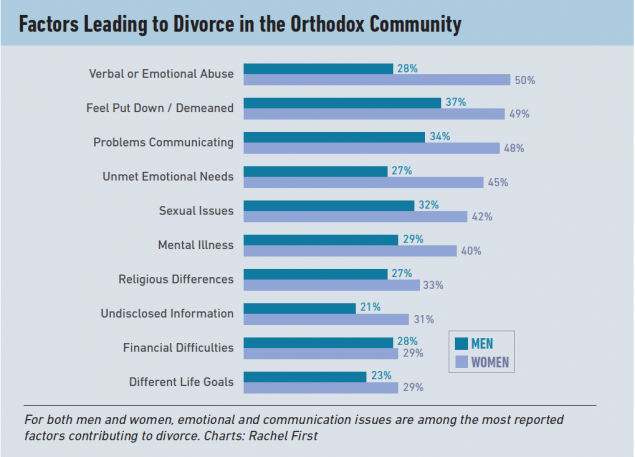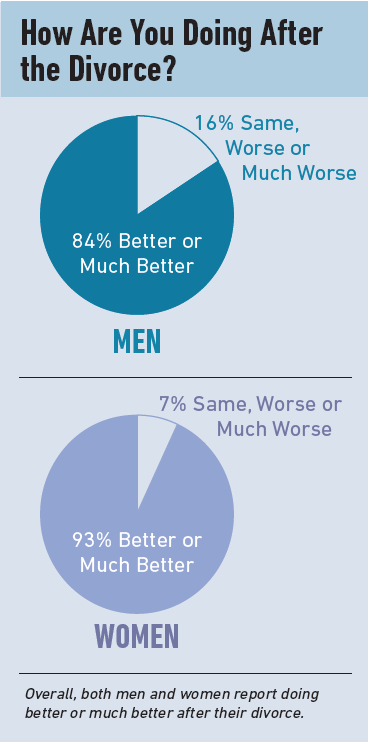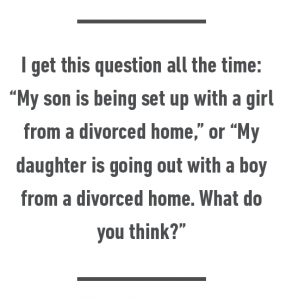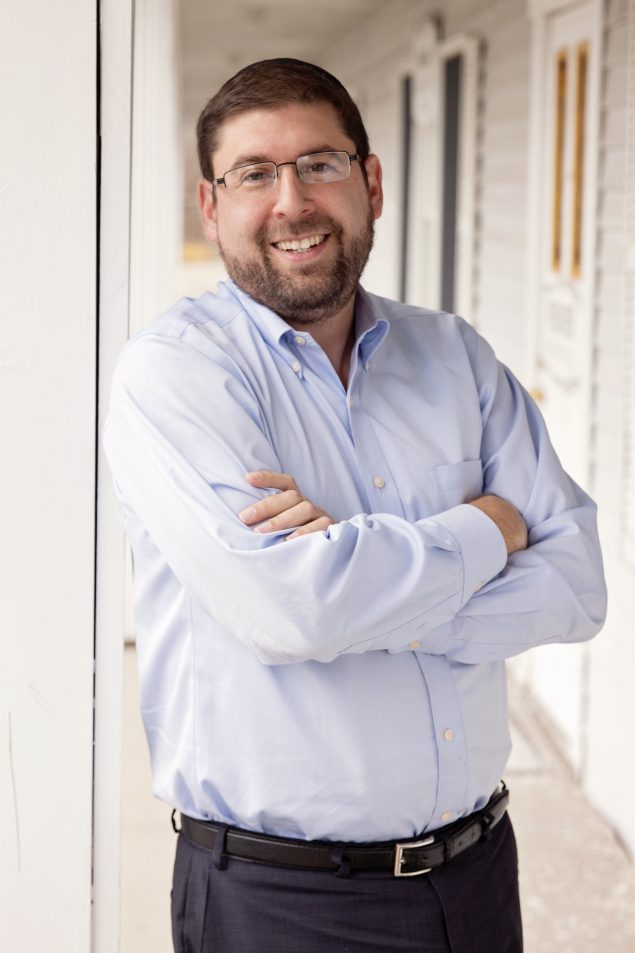The Data on Divorce: Q & A with Dr. Yitzchak Schechter
Dr. Schechter recently spoke with Jewish Action editor Nechama Carmel about his research on divorce in the Orthodox community. Dr. Schechter presented some of his findings at the December 2015 Nefesh Conference held in Hauppauge, New York, and is preparing several articles for publication in a peer-reviewed academic journal. Please note that the article below isn’t meant to be a scientific review, but rather a translation of some emerging findings in the community.
Dr. Schechter is a clinical psychologist and director of the Center for Applied Psychology at Bikur Cholim in Monsey, New York, one of the leading mental health providers in Rockland County and one of the largest providers of mental health services to the Orthodox community. He recently launched the Institute for Applied Research and Community Collaboration (ARCC), whose mission is to conduct and disseminate research about health, mental health and social issues in the frum community.
Nechama Carmel: I understand you have a strong interest in data collection and analysis. Tell us about this interest and how you use it in your work.
Dr. Yitzchak Schechter: In any area of life, knowing the reality of a given situation is critical. You can’t introduce change and determine if it is effective without measuring and evaluating it.
This is true in halachah as well. A posek (halachic decisor) can only arrive at a pesak (halachic conclusion) if he knows the reality of the situation.
While data collection is a modern concept, we see the importance of it in Torah sources. The Mishnah (Shevuot 7:7) says, for example, that you can’t take an oath and invoke God’s Name in a beit din unless [the case concerns something] that can be counted, measured or weighed; that’s what metrics are all about. It’s about accuracy and accountability.
Relying on data and research when it comes to communal programs and funding helps ensure transparency and accountability. How can we honestly gauge if a program is effective and if money is being well spent if we don’t measure the outcomes and its effect? One might have feelings or hunches about what’s going on in the community, based on his or her experiences, but is that actually the reality or just one’s perception?
We’re using data in business, in medicine, and in all sorts of other areas; shouldn’t we have data about frum communal life?
So one of my goals, which we have already begun working on, is to create and disseminate real data based on methodical and trustworthy research in the Orthodox community. We are not interested in ivory tower, picayune research. We are interested in research that has an application to the real world. The point is to use data to help inform policy, decision-making and real life. It’s really a revolution. A revolution in how we make decisions.
NC: How do you generally obtain data?
Dr. S: Mostly through collaboration. We at the ARCC work closely with other organizations—clinics, schools and social service agencies—to capture data that can be useful and translated into meaningful knowledge. Of course, privacy is paramount, and all of the information we collect is anonymous.
No one organization can do everything, but working collaboratively we can do amazing things. Just envision for a moment, if we were to collect data from clinics and clinicians, schools, shuls, mikvaot and batei din, we could get a really clear picture of what’s going on in the Orthodox world. We would basically be covering the entire life and community cycle of Orthodox Jews.
NC: You recently conducted a comprehensive study of divorce in the Orthodox community. Can you share some of your findings?
Dr. S: Last year, we began to release some of the findings of our ARCC Divorce Study in the Orthodox community. The analysis was based on the survey responses of 310 divorced respondents and 194 married respondents across the US and Canada—a total of more than 500 respondents from across the Orthodox spectrum. The survey was really all-encompassing and it will take us another few years to finish analyzing and reporting on all of the data.
Somewhat surprisingly, despite the fact that the survey was quite thorough and the topic rather sensitive, people were interested in telling their stories. Over and over again, from all of our survey respondents (not just in this divorce study), we hear the same message: “Thank you for allowing our voices to be heard.”
Before we get into some actual findings, some background: the overall divorce rate in the American Orthodox community appears to be around 10 percent* with some variation, slightly higher for the non-Chassidic frum population, slightly lower for the Chassidic population. We sometimes need to step back and see the big picture. Out of our zeal to solve all of the problems, we forget to put them in the proper perspective: A 10 percent divorce rate is amazing! (For the sake of comparison, the divorce rate in the general population is about 48 percent.) Also, because so many people get married in the Orthodox community—we have a very high marriage rate (between 80 and 85 percent of frum American Jews are married)—the 10 percent statistic is even more meaningful. In other words, because the marriage rate is so high and the divorce rate is so low, marriages among the frum population are, generally speaking, lasting.
Interestingly, the fact that the divorce rate is low leads to a different kind of challenge. It inadvertently labels those from single-parent homes as being “out of the box.” In the frum community, if you are out of the box, you can have a harder time fitting in. While it is certainly positive that divorce in our community is still a relative oddity, it comes at a cost. It can result in children of divorce feeling very different from their peers.
 NC: Ok. So let’s discuss your actual findings. Why are people getting divorced?
NC: Ok. So let’s discuss your actual findings. Why are people getting divorced?
Dr. S: We looked at various factors that people said contributed to their divorce. Based on the data, for both men and women, emotional needs and problems with communication are among the most reported factors contributing to divorce. For women, abuse seems to be the single highest factor reported, although it’s hard to draw specific conclusions given the unspecific nature of “verbal or emotional abuse.”
Another important finding highlights what we’re doing right and that it’s not all gloom and doom: Post-divorce, most people report doing much better overall. Ninety-three percent of divorced women and 84 percent of divorced men say they are doing better or much better after their divorce.
We asked about people’s wellness in six categories (overall well-being, personal finance, work/professional life, religious life, personal well-being and interpersonal relationships). In all categories, aside from finances and religious life, both men and women report doing well. Both men and women report that finances present the biggest challenge post-divorce.
On the whole, men tend to experience religious decline much more than women after divorce. This may be due to the fact that in general, women have custody of the children, which anchors them more to the community. Modern Orthodox and Yeshivish men do not do as well religiously post-divorce as compared to Chassidim, who remain religiously stable overall. (Interestingly though, when Chassidim do change religiously, they tend to have greater categorial shifts, i.e., moving from Chassidic to Modern Orthodox.)
NC: Can you share other findings that emerged from the data?
Dr. S: Data tells us the story of the good, the bad and the ugly. Though the overall divorce rate is only around 10 percent, sadly, the level of contentious divorce in the Orthodox Jewish community is quite high. Fifty-seven percent of the sample reported that their divorce was highly contentious or acrimonious. While we have not compared this to the general population, the numbers on their own are concerning.
The contentiousness may be the result of a few factors: the get process; the very close-knit family systems in the Orthodox world; and the “too-many-cooks-in-the-kitchen” phenomenon—the fact is there are often many players and authorities (community rabbis, mentors, family members, et cetera) giving advice and directing the divorcing couple. Put all these ingredients together, shake them up well, and you get a very messy situation.
Perhaps on a more positive note, our data indicates that mediation works much better than going to court. And contrary to popular thinking, more than 50 percent of respondents said that the beit din process was either positive or very positive. While there is still much work to be done, this is encouraging.
NC: You said earlier that application is very important. What are some of the applications of this data?
Dr. S: Nearly half of the divorced women and a third of the divorced men in our study reported communication and emotional issues as being overwhelmingly significant factors in their divorce. Divorce is always going to be a reality. But by identifying the primary contributing factors, and noting that a lot of them may be amenable to change, we can hopefully intervene and provide education, support and treatment for those contemplating divorce.
Similarly, now that we know the risks post-divorce, we can plan for them. The fact that most people report doing better or much better after divorce is a surprising outcome and may be useful in reducing anxiety among those considering divorce, as well as among those guiding them. Obviously, divorce is a serious, life-altering decision. But assuming divorce is necessary, these findings may serve as a counterbalance to many people’s bleak assumptions about post-divorce life.
Furthermore, since finances and religious life seem to pose the greatest challenges, perhaps the community, through the rabbanim or social service agencies, should provide financial planning assistance to those in the process of divorcing; similarly, we should be providing religious support and guidance before, during and after divorce.
 NC: Can you give an example of how data can be used to set policy?
NC: Can you give an example of how data can be used to set policy?
Dr. S: As part of the study, we wanted to know if someone who experienced childhood abuse (sexual or physical) has an increased risk for divorce. We found some eye-opening but not surprising results:
– Sexual abuse was seven times more common among divorced versus married individuals
– Physical abuse was three times more common among divorced versus married individuals
These findings are very, very significant. They mean that childhood experience of abuse is a significant risk factor for later marriage outcomes and must be addressed as early as possible. It is important for rabbis, clinicians, chatan/kallah teachers as well as the daters themselves and their parents to know that abuse is a risk factor in marital dysfunction—this is true most dramatically of sexual abuse. This is not to say that abuse victims cannot have wonderful, loving marriages. It just means there’s an increased risk that needs to be addressed prior to and during marriage.
I showed the data regarding abuse to a pre-eminent posek who is well versed in mental health issues. Shortly after that, he was asked by a mental health professional whether one needs to disclose to the individual he is dating that he was sexually abused. The posek replied that he had always felt that one should because it could lead to later problems, “but now based on Dr. Schechter’s research, I have proof of it; the answer is yes. One must disclose this.”
Two months later, I heard that a young woman consulted with this rav about the fact that she was abused and was about to get engaged. She was told to disclose this to her soon-to-be husband. She did. Subsequently, the couple received the support they needed and married. They are currently doing very well. Other potential victims were spared because of this disclosure as well.
This pesak is an ideal example of how data can guide public policy. In light of these findings, we are working on a specific protocol for rabbis and chatan and kallah teachers to follow when abuse is flagged.
NC: Very compelling. Are there other examples from your research of how data can influence public policy?
Dr. S: Absolutely. I get this question all the time: “My son is being set up with a girl from a divorced home,” or “My daughter is going out with a boy from a divorced home. What do you think?”
If one is primarily concerned about “kavod,” that is, social status and standing in the community, I can’t really help, as I don’t have data on that. If, however, one is concerned about whether or not there is a higher likelihood of divorce among those who come from divorced homes, I do have data on that.
Contrary to popular belief, we found something rather striking: in the Orthodox community, being a child of divorce does not increase one’s likelihood of getting a divorce. Eleven percent of both our married and divorced samples reported that their parents are divorced. What this means is that in the Orthodox community, parental divorce is not a significant predictor for divorce in children.
Assuming that an individual from a divorced home is emotionally healthy and has good relationships with people, there is no justification for rejecting such a shidduch on this basis alone. On the other hand, if someone has gone through very challenging life experiences and is not functioning well, whether he’s from a divorced or an intact home, one might want to consider such a shidduch more carefully.
This data is useful for rabbis, shadchanim, clinicians and family members who are frequently asked about this. In general, as a community, we should not be basing critical life decisions on “yenting” [gossip or hearsay] or Shabbat table talk. We should go about making such important decisions the same way we go about determining what car to buy or what investments to make—by doing thorough research and looking at accurate information. This approach allows us to more thoughtful in our decision-making.
NC: Is this finding true of the general American population as well?
Dr. S: Not really. In the general population, there is a higher level of divorce among children of divorce. What accounts for the difference? One theory is the valuation of marriage. In the frum community, we value marriage very highly and make it an assumption of the life cycle. Marriage is less valued in the general community (where the marriage rate has been declining in recent years). Another reason may be modeling. Frum life is incredibly social and family-oriented. People tend to go to neighbors and friends for meals and get-togethers on Shabbat. Additionally, when young men and women visit other communities or spend the year in Israel, they witness models of marriage that are different than what they might have seen at home. These experiences enable them to see and learn from positive role models.
 NC: Based on your research, what should the average community member be doing to assist children of divorce?
NC: Based on your research, what should the average community member be doing to assist children of divorce?
Dr. S: As we said, we are doing quite a few things well. We’re very good at working within our comfort zone and serving the typical, everyday needs of community members. But we need to be a bit more thoughtful about how we can reach out to those outside of our communal comfort zone. What people really need is to feel part of the community. When you are divorced or a child of divorce, you are at risk of losing that sense. The founding principal and former dean of Darchei Noam in Monsey, New York, Rabbi Yaakov Horowitz, used to deliver a shiur during the school year to give parents an overview of the gemara that their sons would be learning that year. He would specifically invite mothers to attend since he wanted single mothers to have the ability to do the gemara homework with their sons. This illustrates the kind of sensitivity we need to have. While not every community would be comfortable with such an arrangement, in every case and in every community there are ways to be more sensitive to divorced parents and their children without disrupting cultural norms.
Shabbat and yom tov, which are family times, tend to be difficult for families of divorce. Inviting families for meals and helping them have the dignity of spending Shabbat and holidays in their own homes is of great value. Sometimes all that is required is thoughtfulness. Recently, a single father suggested that perhaps when women get together to bake challah as a segulah, the challah should then be given to single fathers who don’t generally have access to home-baked challah. That, he said, might serve as an even greater segulah.
For boys, going to shul is so important. I know of two particularly messy divorces where a neighbor used to take the young boys in the family to shul every Shabbat; today, these boys are sincerely religious and connected to the community even though their fathers are not. In every shul, men and older boys should be thinking about what they can do for the boys from single-parent homes. The same applies to women in the community who can be there for young girls who might not want to be in the women’s section by themselves.
NC: Any parting words for our readers?
Dr. S: Our goal here is not to share all of the details and nuances of this data, but to convey some of the important findings that can inform the conversation and decision-making process. We still have a lot of work to do. It will take us another few years to finish analyzing and reporting on all of the data. The research we’ve discussed is just the tip of the iceberg. I look forward to sharing more of it with the readership as we further analyze the data and learn more in the months and years ahead.
To learn more about Dr. Schechter’s research, visit arccinstitute.org.

